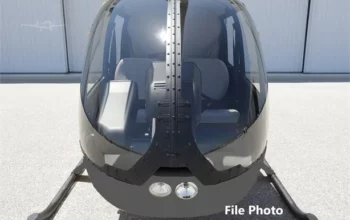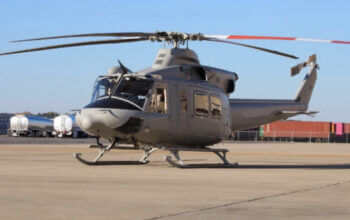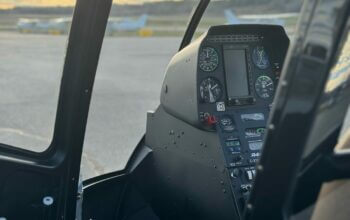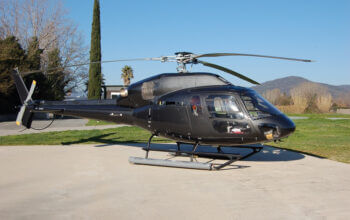Estimated reading time 7 minutes, 50 seconds.
EcoPulse, a distributed hybrid-electric propulsion aircraft demonstrator jointly developed by Airbus, Daher and Safran, is making significant progress as it moves closer to its first flight powered by electricity — which was pushed from 2022 to the second half of 2023.
Over the past year, the collaborative teams at Daher, Safran, and Airbus have been working on finalizing the aircraft’s aerodynamic and systems configuration. This includes the incorporation of six electric propellers (e-Propellers) mounted on the wing’s leading edge, along with on-board electrical distribution, propulsion, and flight control systems. These advancements have paved the way for the demonstrator’s first public appearance at the upcoming Paris Air Show, to be held from June 19 to 25 at Paris-Le Bourget Airport in France.

The project was first announced in 2019 with the support of the French Civil Aviation Research Council (CORAC) and co-funding from the French Government and the European Union. Based on Daher’s TBM light-aircraft platform, the EcoPulse demonstrator focuses on evaluating the advantages of distributed propulsion, high-voltage electrical propulsion, and battery systems for future aircraft integration.
Preliminary aerodynamic testing has been underway since the beginning of this year at Daher’s development base in Tarbes, France. The test flights have involved gradually attaching the e-Propellers, provided by Safran, to the aircraft. Starting with two, then four, and eventually all six e-Propellers, the flights — conducted with the legacy turboprop engine in the nose — have allowed test pilots to assess the aerodynamics and overall handling characteristics of the aircraft with the added inertia of the propellers and pods.
“This phase thus brings the project an important step closer to a distributed hybrid-electric flight later this year, which will use the six activated wing-mounted e-Propellers,” noted Daher in a press release. “Each of these units features a three-bladed propeller supplied by DUC Propellers, attached to a 50-kW ENGINeUS electric motor housed in a pod immediately behind.”
Once the demonstrator takes flight with the electric mode activated, it will demonstrate the essence of the project’s Distributed-Electric-Propulsion (DEP) concept. According to Daher, DEP enables a single electrical power source, or a combination of power sources, to provide energy to multiple engines distributed throughout the aircraft. In the case of the EcoPulse, the integrated high-voltage battery (around 800Vdc), developed jointly by Airbus, powers all six electric motors, while a compact 100-kW turbogenerator, supplied by Safran, complements the electrical system. The challenge for Airbus in developing the battery was to ensure it is lightweight and compact; offers high power and energy density; and is compliant with environmental and safety regulations, noted Daher.

Key components of the DEP architecture include the Power Distribution and Rectifier Unit (PDRU), responsible for protecting and distributing electrical power, as well as the high-voltage power harnesses — both developed by Safran. DEP also allows for precise control of the thrust, with each electric motor individually controlled by Airbus’s Flight Control Computer (FCC). This enables lateral control, potentially reducing the reliance on physical rudders and ailerons, thereby reducing weight and drag. Daher has made cockpit modifications that facilitate engagement of DEP modes (such as torque or speed control) via a dedicated panel.
Pilots “then fly the aircraft using throttle for power (comprising simply left and right throttle levers — one for each wing), and a sidestick to control the aircraft’s overall direction and trajectory,” Daher explained.
A major advantage for pilots is that “they will not have to think about what each e-Propeller and/or flight control surface is doing in real-time — either in isolation or in combination — since that aspect is all taken care of by the FCC logic,” the press release reads. “They simply have to tell the aircraft what they want it to do via the flight controls.”
As well, unlike with traditional turboprops, the angular displacement of each e-Propeller’s rotor can be monitored and digitally controlled with extreme precision — down to a single degree. Daher said this allows for automatic synchronization of adjacent propellers, minimizing noise and vibration during flight — a key technological aspect that will be explored during the forthcoming flight test campaign with the DEP activated.
The next step for the EcoPulse aircraft is the full installation, activation, and ground testing of the high-voltage power train, including the turbogenerator, battery, and operational e-Propellers. The highly anticipated flight with DEP fully engaged is expected to occur later this year.
During this year’s Paris Air Show, the EcoPulse demonstrator will be showcased in its final external configuration at the static display’s “Paris Air Lab” stand.











